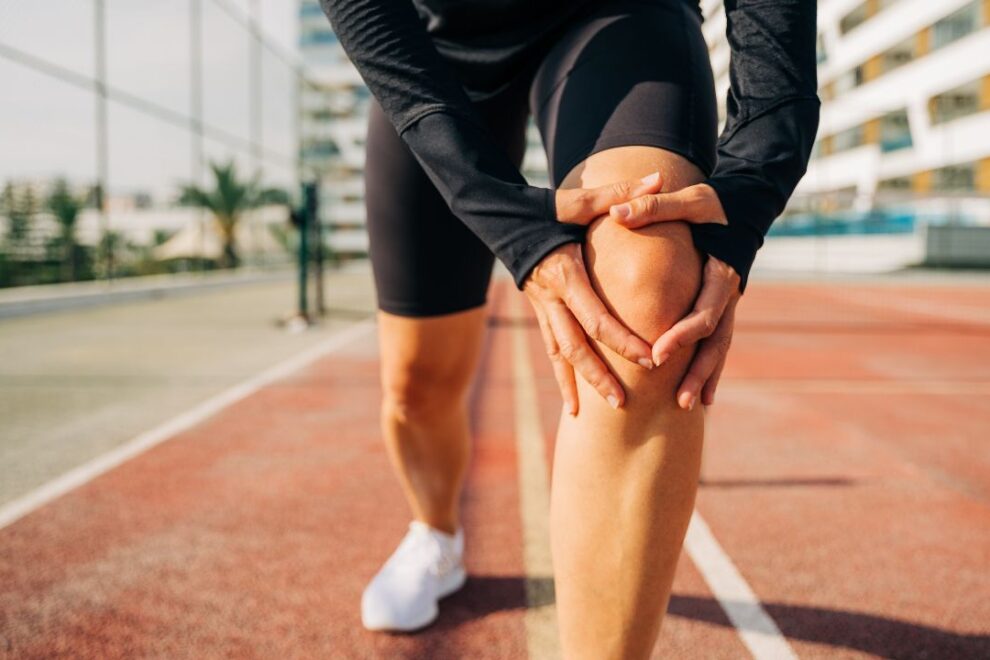ACL Reconstruction Surgery in India: Advanced Treatment Options and Costs for Knee Injuries
ACL Reconstruction Surgery in India, several individuals are undergoing the treatment. Mainly sports players are affected by these problems. When a sports player of football, basketball, volleyball, etc, they have a problem with the knee. There is pressure or stress in your knee, which causes a problem with ACL Reconstruction Surgery. For this treatment, there is the use of highly advanced machinery and technology. Surgeons will use the best devices and techniques.


Free Doctor opinion

Personalized care with a warm interaction with the patient
- Achieving outstanding success rates through our dedicated care approach.
- Equipped with the latest technology to ensure optimal treatment outcomes.
- Our expert team provides exceptional healthcare with experience.
- Offering 24/7 assistance for your health needs and concerns.
- Providing quality treatment at reasonable costs for every patient.
- Contact us Email ID:[email protected]
- Call us: +91 9029304141
ACL Reconstruction Surgery in India – Full Explanation
ACL Reconstruction Surgery is a surgical treatment whose main goal is to treat an ACL (anterior cruciate ligament). It is found in the knee part that connects the thigh bone to the shin bone. Surgeons will use the best devices and techniques. There are uses of highly advanced machinery and technology. Mainly, there is the use of minimally invasive techniques. It is the best technique; it gives less pain and recovery quickly. An ACL Reconstruction problem occurred in a sports person.
You know that in India, several individuals get injured by accidents while playing football, volleyball, cricket, baseball, basketball, etc. So, there is a need for the treatment of ACL Reconstruction. Most players get injured by knee problems while playing the knees get pressure or stress. It gives symptoms of pain, swelling, stiffness, and bruising around the knee. So, if you have been facing these symptoms for a long time, get stress on your knee, and are unable to play a match. You have to get treatment as soon as possible.
In India, ACL Reconstruction Surgery is a very successful treatment, and most individuals are happy with the results. Right now, you are searching for the best clinic or hospital in India, and you want to undergo treatment. We consider the best clinic for ACL Reconstruction Surgery in India as “We Care India”. It provides you with the best treatment facility for ACL Reconstruction Surgery. There is a well-qualified and highly experienced team of specialists. They use advanced machinery and technology for ACL Reconstruction Surgery. Most cases of the treatment are successful.
Why should you trust “We Care India” for Guaranteed Surgery In India?
- First-stage top counseling sessions
- Premium services and processes
- Highly competent specialists for Guaranteed Surgery In India
- Sky-High Surgery Success Rates in India
- Contact us Email ID: [email protected]
- Call us: +919029304141
The Procedure of ACL Reconstruction Surgery in India
Now, here you will know the Procedure of ACL Reconstruction Surgery. Before the surgery, the doctors will give some instructions on how you should be healthy for the treatment. For the Surgery, it is necessary to eat healthy food, which makes the treatment successful. An ACL reconstruction surgery is performed to reconstruct the ligament in the center of your knee. So, let’s know about it in detail.
Before the Procedure of ACL Reconstruction,
Before the Surgery, you have to reach the hospital. The healthcare team will get ready for the surgery. They will always support you and take care of your health. You will get prepared for the physical exam and imaging tests to plan for the procedure. They check if you are healthy enough for surgery. You have to undergo some additional tests, such as an X-ray. It will help to see the inner damaged part of your knee.
They will ask you about any medicines you are taking, such as over-the-counter medicines such as aspirin or ibuprofen, street drugs, herbs, vitamins, and other supplements. They will also tell you if there are any other medicines you should stop taking ahead of time, like blood thinners, etc. They will tell you about the benefits, risks, and complications of your health conditions. So, before the 12 hours of the surgery, you do not have to eat food or drink water. They will also give you directions for getting ready.
During the Procedure of ACL Reconstruction,
During the Surgery, a healthcare team is available with you till your surgery is completed. You will receive anesthesia to numb your body, and he/she will not feel any pain. The body gets relaxed and comfortable. The anesthesiologist will give either general anesthesia to put you to sleep. Surgeons will use the best devices and techniques. They used an arthroscope device, which is a thin and flexible tube with a camera and light. It helps to examine the damage inside the knees. Surgeons make a small incision near your knee and insert an arthroscopy device to find the damaged part. They will use a graft device to replace the torn ACL. It is prepared and shaped to fit the location of the torn ACL. Finally, they will close the incision with bandages.
After the Procedure of ACL Reconstruction,
After the Surgery, you will get moved to the recovery area. A Healthcare team is available to you. You will get a return on the same day. A healthcare team will give you instructions you have to follow. It takes time to recover properly, your recovery process will take 6 to 9 months or longer. You will need to wear a brace and try to do exercises daily. You have to make an appointment with the doctor for the betterment of your health conditions.
What are the benefits of ACL Reconstruction Surgery?
After the Surgery of ACL Reconstruction Surgery, they will benefit from their improved health conditions. In India, Several individuals are treated by ACL Reconstruction Surgery, they will get a benefit. They will get relief from pain and not get stress on their knees. So, now let’s know about in detailed.
- It helps to restore the stability of the knee. You will get a natural sabitilty.
- There is reduced pain and stability of the knee.
- You will return to normal activities of daily life.
- There is an improvement in your quality of life. You will be able to regain confidence and participate in sports activities.
Cost of ACL Reconstruction Surgery in India
In ACL Reconstruction Surgery, there are used of highly advanced machinery and technology are used. Surgeons will use the best devices and techniques. Patients are getting treated by minimally invasive techniques, it is the best treatment. Their cost is higher than open surgery, But it will be affordable and reasonable. You know that, in every treatment, the cost plays a vital role. It is because it is an important factor in which every individual mind the different questions arise, what is the cost of the treatment? Are there any different questions related in their minds? The cost of ACL Reconstruction Surgery in India is very much based on the specific procedures. Cost depends on the types of treatment, patients, health conditions, and the hospitals.
So, the cost of ACL Reconstruction Surgery in India can range from ₹ 1,10,000 to ₹ 6,00,000, and the average cost of ACL Reconstruction Surgery in India ranges from ₹ 2,00,000 to ₹ 3,00,000. The cost depends on several factors such as the location of the hospital, the reputation of the center, the type of treatment used, the individual’s case, the expertise of doctors or surgeons, Length of hospital stay, age, and the health of the patients. In some cases, there is a chance to reduce the cost of ACL Reconstruction Surgery, including paying in cash, combining multiple procedures into one surgical session, and getting insurance coverage.
Here are the lists of Costs of ACL Reconstruction Surgery in India by varying cities and states.
Cost of ACL Reconstruction Surgery in India | Cost of ACL Reconstruction Surgery in India (₹) |
Cost of ACL Reconstruction Surgery in Ahmedabad | ₹ 1,20,000 to ₹ 2,90,000 |
Cost of ACL Reconstruction Surgery in Bangalore | ₹ 2,49,450 to ₹ 3,32,600 |
Cost of ACL Reconstruction Surgery in Bhubaneswar | ₹ 1,10,000 to ₹ 2,90,000 |
Cost of ACL Reconstruction Surgery in Chennai | ₹ 2,49,450 to ₹ 3,32,600 |
Cost of ACL Reconstruction Surgery in Delhi | ₹ 1,50,000 to ₹ 3,00,000 |
Cost of ACL Reconstruction Surgery in Faridabad | ₹ 2,24,505 to ₹ 2,99,340 |
Cost of ACL Reconstruction Surgery in Gurgaon | ₹ 2,49,450 to ₹ 3,32,600 |
Cost of ACL Reconstruction Surgery in Hyderabad | ₹ 1,30,000 to ₹ 2,80,000 |
What are the factors affecting the costs of ACL Reconstruction Surgery in India?
There are several factors affecting the cost of ACL Reconstruction Surgery in India. This is because there are different places in India, and the costs depend on people’s living conditions. Every hospital and clinic has different management facilities, technology, and specialists. So, now let’s go into detail.
Location: This factor plays the most important role in deciding the Cost of ACL Reconstruction Surgery as the cost varies from city to city. Different cities have different costs. For instance, the Cost of ACL Reconstruction Surgery also varies based on the type of surgery the doctors use.
Surgeons: Surgeons with several lot of experience and skills charge more as compared to surgeons who charge less due to less experience in the medical field.
Patient’s condition: The patient’s age, health, and personal preference can also influence ACL Reconstruction Surgery in India.
Why choose We Care India for the cost of ACL Reconstruction Surgery in India?
We Care India is the best medical service provider in India, and we care for the patients and the healthcare provider team. We have a medical team that works 24*7 to handle the medical cases. So feel free to contact us anytime as our friendly medical staff will help you with your medical enquiry. Our highly qualified doctors work 6 days a week to diagnose your disease and assist you with one of the best treatments.
Moreover, our opening hours vary on different days. Mondays through Fridays are different, and Saturdays and Sundays are different. Our trusted medical team offers personalized care. With exceptional service, we ensure successful treatment. Our medical service provider center is considered the top healthcare company that offers the best medications, treatments, surgical processes, etc.
This center offers several treatments or surgeries, such as cosmetic surgery, brain and spine surgery, and cancer treatment. So, this medical center is to make your future bright like the moon. With 25 years of experience in the medical sector, we offer top-notch quality performance to patients with any type of disease. Our center specializes in affordable and reasonable cost of ACL Reconstruction Surgery in India. We offer smooth ACL Reconstruction Surgery.
Frequently Asked Questions (FAQs)
Define ACL Reconstruction Surgery.
ACL Reconstruction Surgery is a surgical treatment that uses minimally invasive surgery. Its main goal is to treat an ACL (anterior cruciate ligament). It is found in the knee part that connects the thigh bone to the shin bone.
What are the benefits of getting the surgery?
After the Surgery, you will get benefits on your conditions. There is reduced pain and stability of the knee. There is an improvement in your quality of life. You will be able to regain confidence and participate in sports activities.
What is the affordable and reasonable cost of ACL Reconstruction Surgery in India?
A Affordable and reasonable cost of ACL Reconstruction Surgery in India can range from ₹ 1,10,000 to ₹ 6,00,000, and the average cost is ₹ 2,00,000 to ₹ 3,00,000.
Why did we select “We Care India” for ACL Reconstruction Surgery?
We selected “We Care India” because it is the best clinic for treatment, has the best facilities, and provides management to the patients. The team of specialists is qualified and experienced. They have 10+ years of experience. They used a highly advanced instrument for the technology and had a high success rate. The Surgeons should be up-to-date on surgical instruments, procedures, and protocols.
Last Word
In this content, you have learned about ACL Reconstruction Surgery in India, There are uses of minimally invasive techniques which give less pain and recovery. During the treatment, highly advanced machinery and technology are used. Here, you will know the benefits, procedure and its costs.
After reading the content of ACL Reconstruction Surgery in India, you have gained more information and knowledge about it. You get to know the methods and their costs. The cost is affordable and reasonable. Here, you know the best clinic in India for ACL Reconstruction Surgery. “We Care India” is the best clinic; it provides you with better facilities and good management.
Read Also :-
- Stenting for GI Tract Surgery: A Minimally Invasive Solution in Digestive Health
- Surrogacy Agency in India: Professional Guidance for Your Parenthood Journey
- Spider Veins Surgery in India: Advanced Treatments for Vein Removal
- Advanced Spondylosis Surgery in India: Procedures, Costs & Leading Hospitals
- Stenting for GI Tract Surgery: A Minimally Invasive Solution in Digestive Health
Committed To Build Positive, Safe, Patient Focused Care.
High Quality
Care
Home Review
Medicine
All Advanced
Equipment
Book An Appointment

At We Care India, we offer complete medical services for your entire family, from routine check-ups to injury care, ensuring personalized attention and expert assistance for all your health needs.


